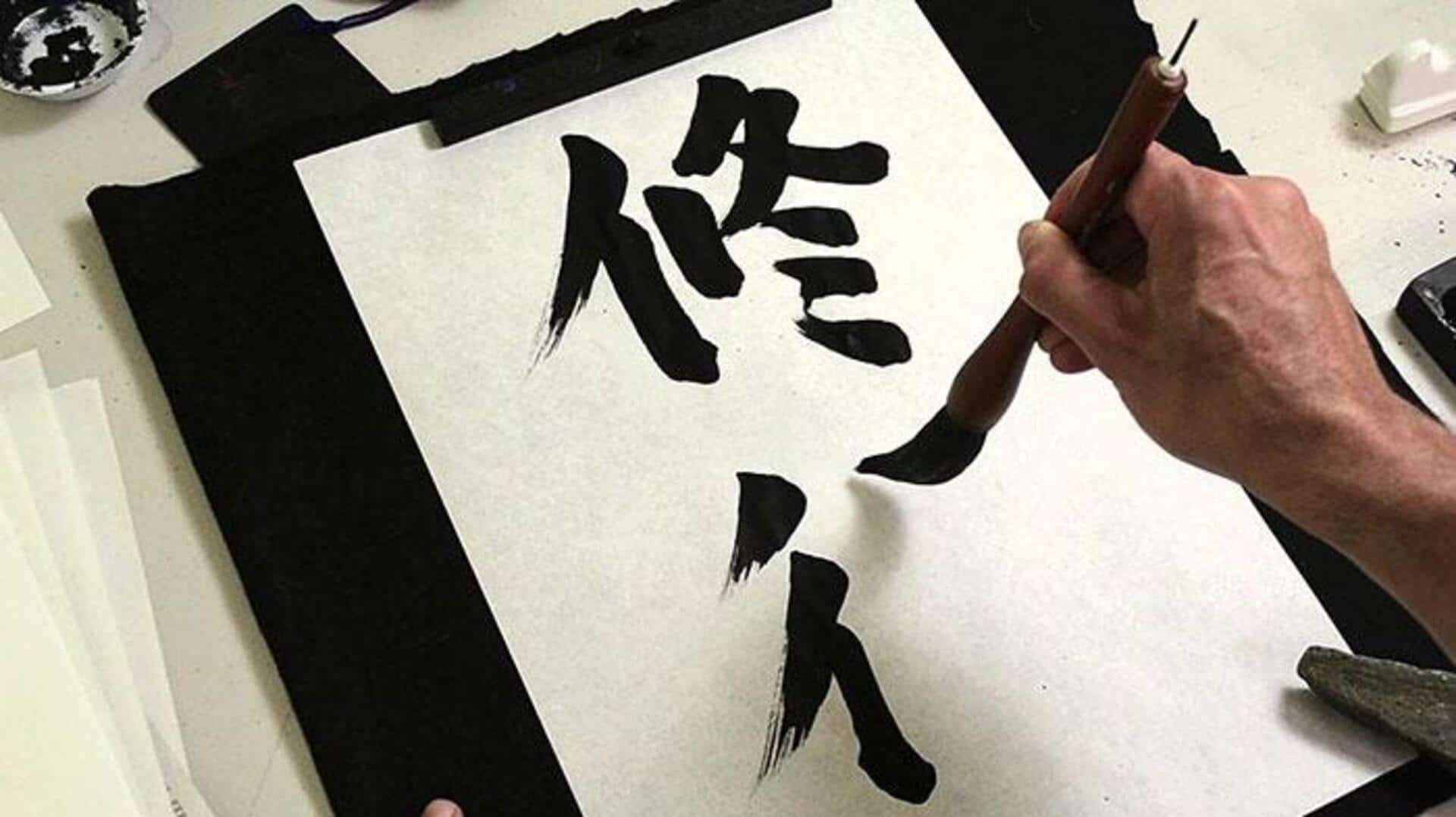
5 unique facts about Japanese shodo calligraphy art
What's the story
Japanese shodo (calligraphy) is an ancient yet revered art that marries beauty with discipline. It involves writing kanji characters artistically with a brush and ink. However, this traditional practice is not just about writing, but also about writing your spirit, your emotions, with every stroke. Shodo has been practiced for centuries in Japan, mirroring cultural values and aesthetics. Here are five unique facts about this fascinating art form that highlight its significance and intricacies.
#1
The influence of Zen Buddhism
Zen Buddhism has had a profound impact on Japanese shodo calligraphy. The practice focuses on the aspects of mindfulness, simplicity, and conveying what lies inside through the least strokes possible. Calligraphers tend to meditate prior to starting off to quiet their minds and be present. This association with Zen philosophy makes every piece of calligraphy a projection of what the artist was thinking at the time of creation.
#2
Tools used in shodo
The tools used in shodo are simple yet indispensable to create beautiful pieces. These include a brush (fude), ink stick (sumi), ink stone (suzuri), and paper (washi). Each tool is vital in getting the effect you want on the paper. The quality of these materials can impact the result greatly, with some artists spending hundreds on great brushes or handmade paper to add to their work.
#3
Different styles within shodo
Shodo encompasses various styles that range from highly structured to free-flowing forms. Kaisho is a block style known for its clarity; Gyosho is semi-cursive with more fluidity; Sosho is fully cursive, resembling flowing water with its swift strokes. Each style requires different techniques and levels of mastery, allowing artists to choose how they wish to express themselves through their work.
#4
Importance of negative space
In Japanese calligraphy, negative space is just as important as the inked areas themselves. Called ma, this principle stresses the importance of balance between what is filled and what isn't on paper. Artists pay special attention to how much space is surrounding each character or stroke while composing their pieces. This impacts overall harmony within artwork—an integral element appreciated by both creators and viewers alike.
Tip 5
Cultural significance beyond artistry
Shodo is more than just an art, it is a cultural pillar of Japan, taught in schools to instill discipline and patience. Students practice characters again and again, hoping to achieve perfection in due time. This dedication is crucial to mastering the craft. Many hobbyists find it therapeutic, indulging in the meditative process of creating intricate designs at home. This amazing tradition continues to inspire admiration and appreciation globally.